White Sands – New Mexico’s Snowy Desert
Our journey through New Mexico continues with a stop at Roswell, site of the alleged crash of an alien spaceship in 1947. The International UFO Museum & Research Center sounds like a pretty serious institution, but in reality is actually a hokey tourist trap with plenty of photo ops with ETs of all kinds. From here we quickly move on to Alamogordo and nearby White Sands National Park which is a place I’ve wanted to visit for decades. Can the sand really be as white as snow as is often claimed? Let’s find out.
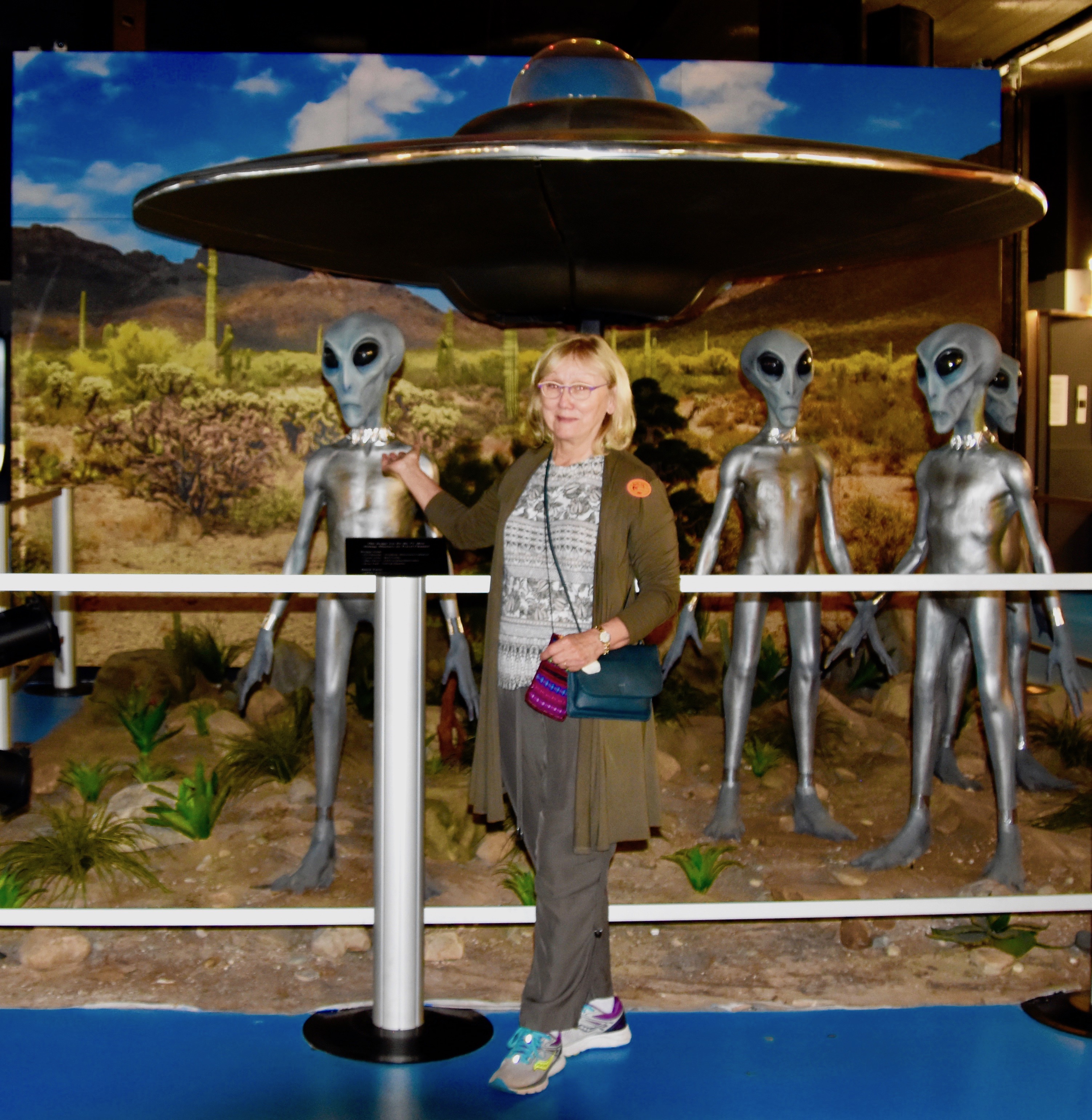
In my last post we visited magical Carlsbad Caverns which more than lived up to expectations and got our tour of New Mexico off to a great start. That was followed by the less than overwhelming Roswell event, although the city of Roswell itself was quite interesting. They have really embraced the whole UFO thing and if you are into that, it is definitely worth a visit. From Roswell we turned west and headed for the soon-to-be ghost town of Lincoln and spent the better part of the day exploring the site of the infamous Lincoln County War where Billy the Kid made his name. More about that in an upcoming post.
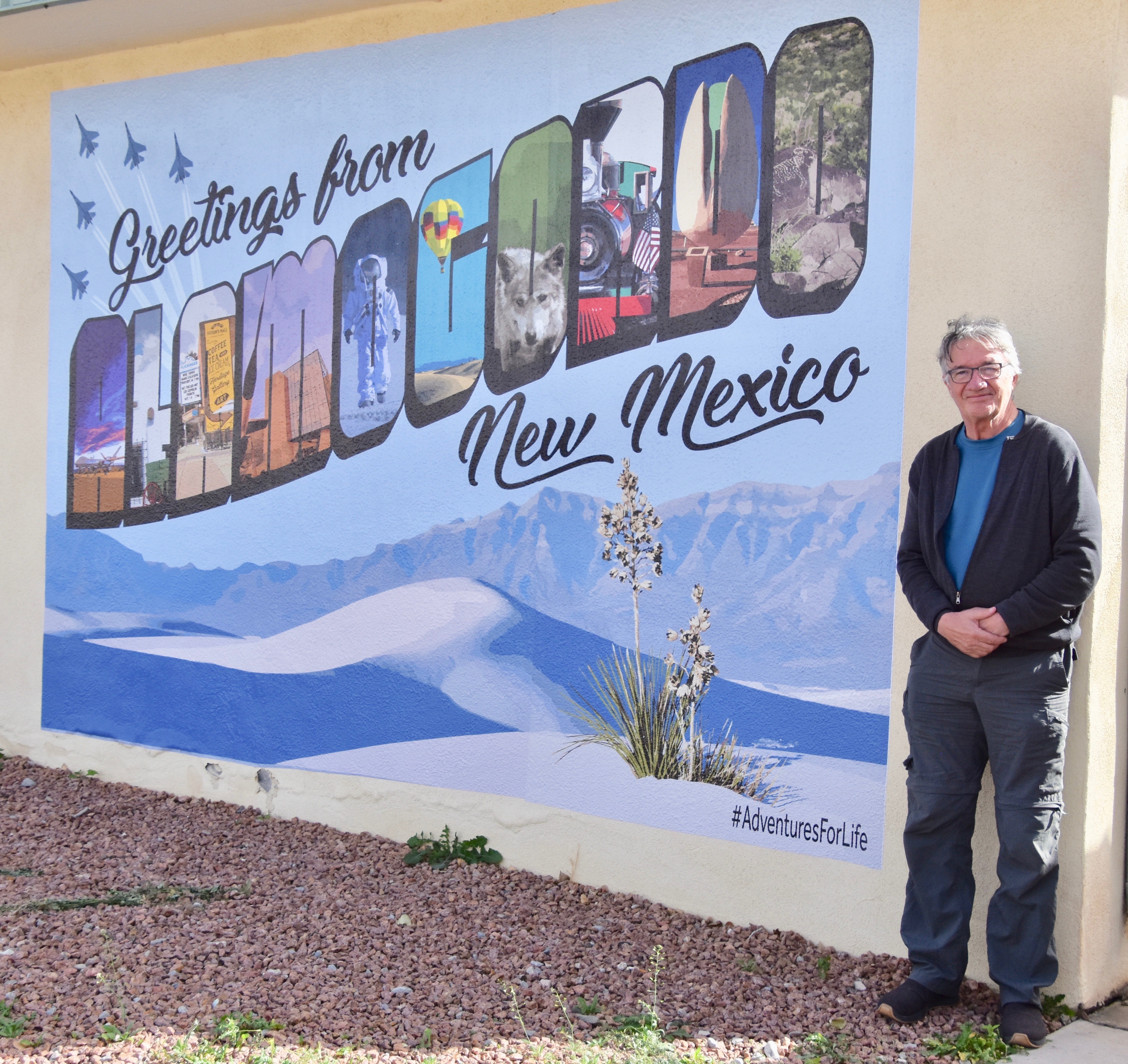
We stayed in the unprepossessing small city of Alamogordo which is closely associated with the Trinity Test Site, aka where the first atomic bomb was detonated on July 19, 1945, a day that changed the world forever. The site is only open to the public two days a year and this wasn’t one of them so in the morning we headed southwest on Route 70 towards White Sands National Park. The park can be closed on relatively short notice if there is missile test in progress which apparently is not that uncommon. The white sands cover an area of 275 square miles and 40% is a national park and the rest belongs to the military who regularly blast the shit out of their portion it. Something’s kind of out of whack there. On the park side of the line any creatures and plants are a fully protected species, on the other side of the line they might get the same treatment General Soleimani just got.
Creation of the White Sands
White Sands National Park preserves 110 square miles of the largest gypsum dune system in the world. Gypsum is an ‘evaporite mineral’ which is a sedimentary rock that forms by way of precipitation from a saline solution e.g. saltwater. This entire area of New Mexico and Texas was once a gigantic seabed now called the Tularosa Basin out of which no water flows. The water that flows into the basin either gets absorbed into the ground or evaporates. A portion of the park contains Lake Lucero which is the source of the white sand. Believe it or not that brown sediment, selenite, you see in this National Park photograph eventually gets the colour eroded out of it and becomes the pure white gypsum particles that then are blown by prevailing winds to form the white sands desert nearby. Lake Lucero is off limits to national park visitors. I’m beginning to think that this area is as closely guarded from public entry as Area 51 in Nevada.
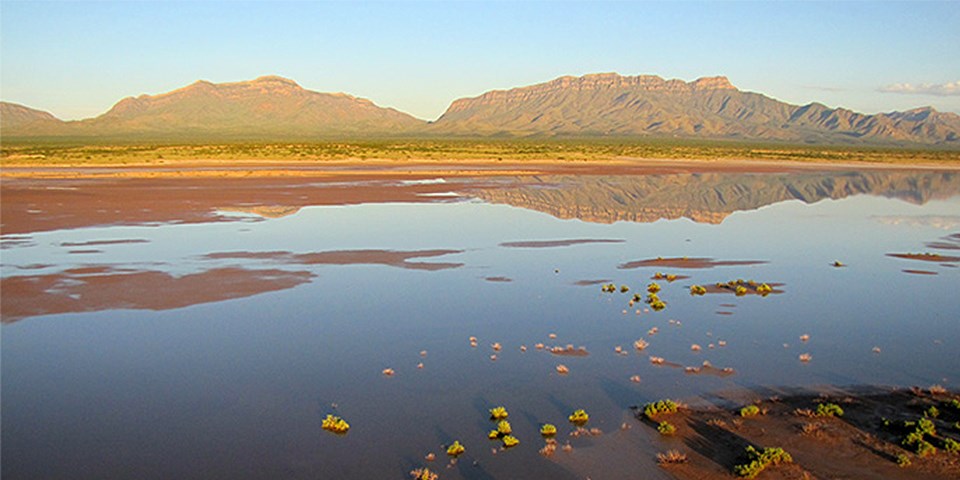
The entrance to White Sands National Park is only about a fifteen minute drive from Alamogordo and it’s not long before the edge of the white sands desert comes into view. Like all dune systems the white sands are on the move and in a few years these trees and shrubs might be completely engulfed.

We show our park pass to the park ranger at the entrance gate and she is very helpful, volunteering that we are among the first vehicles in the park and if we want to experience the dunes with no one else around, go straight to the farthest point of the park road, forgoing the Visitor Centre until later. Below is a map of the park showing the only road in with just a few marked trails. Essentially, the farther into the park you go the less vegetation and the landscape becomes one of pure white sand.
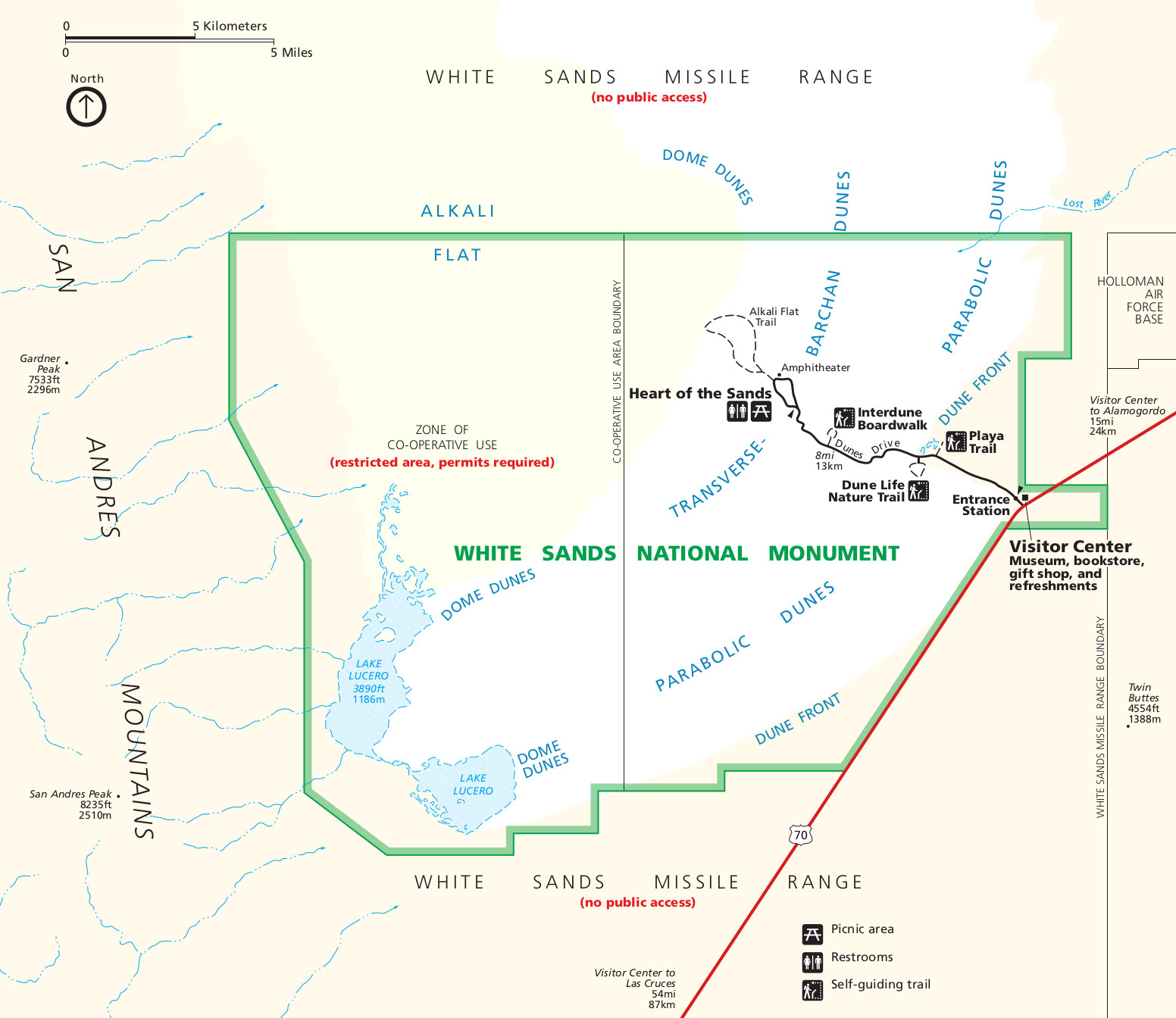
I follow her advice up until the Interdune Boardwalk which has no one in the parking lot and offers a short trip into the ecosystem where plants and animals still survive, but precariously. In the early morning with only the occasional calls of cactus wrens and horned larks breaking the silence, it’s a magical place, but we want to see the pure white dunes so we move on.
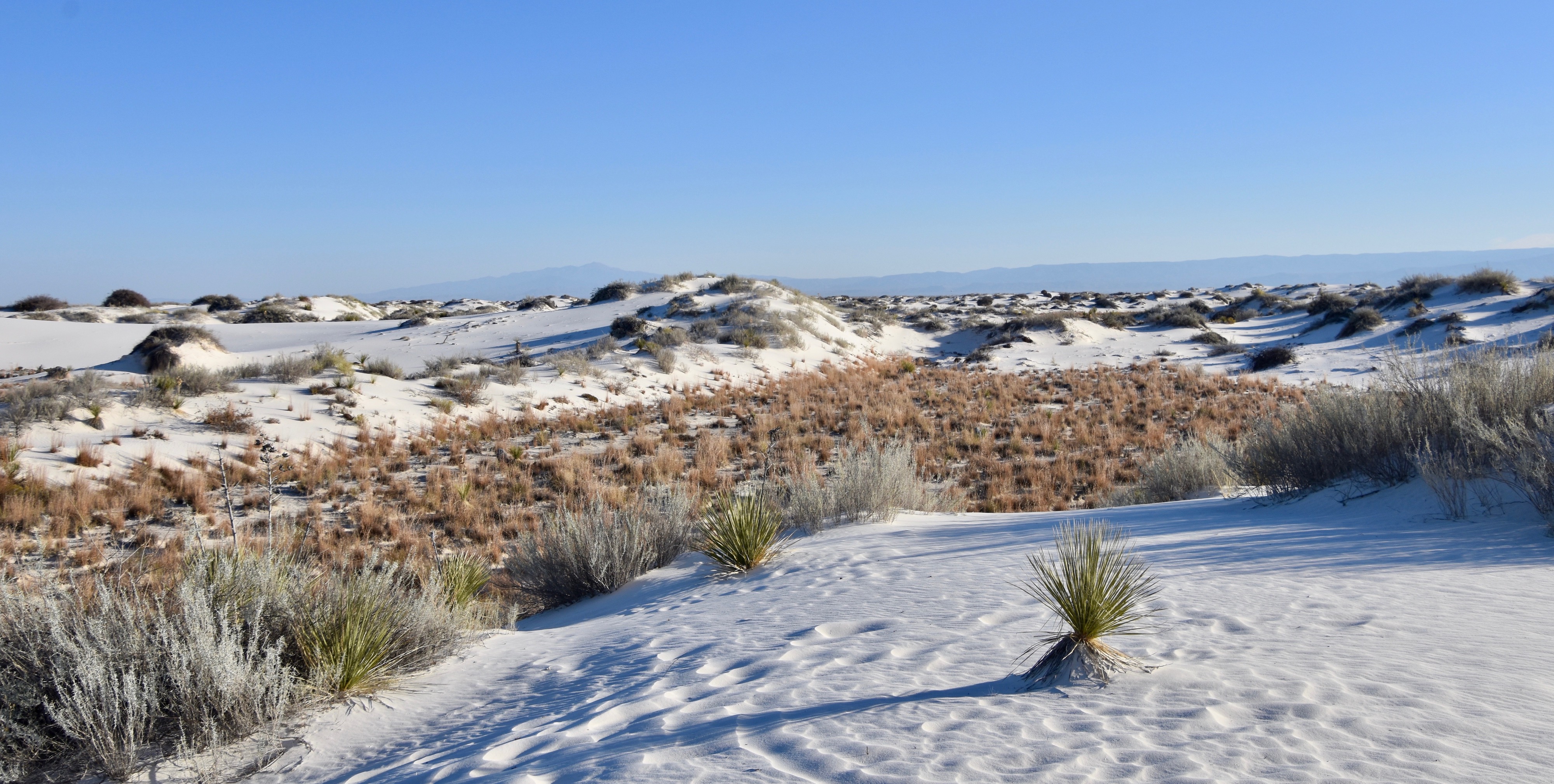
We get back in the car and head on and soon the road looks like this. Having spent a good part of my early life in the western Canadian prairies and experiencing the brutal winters there, scenes like this were common. If I told you that this was a winter drive on ice covered roads in rural Saskatchewan, with no other context, I suspect you would believe me. But, of course it’s not ice, but smooth sand which is not that much easier to drive on than actual ice.
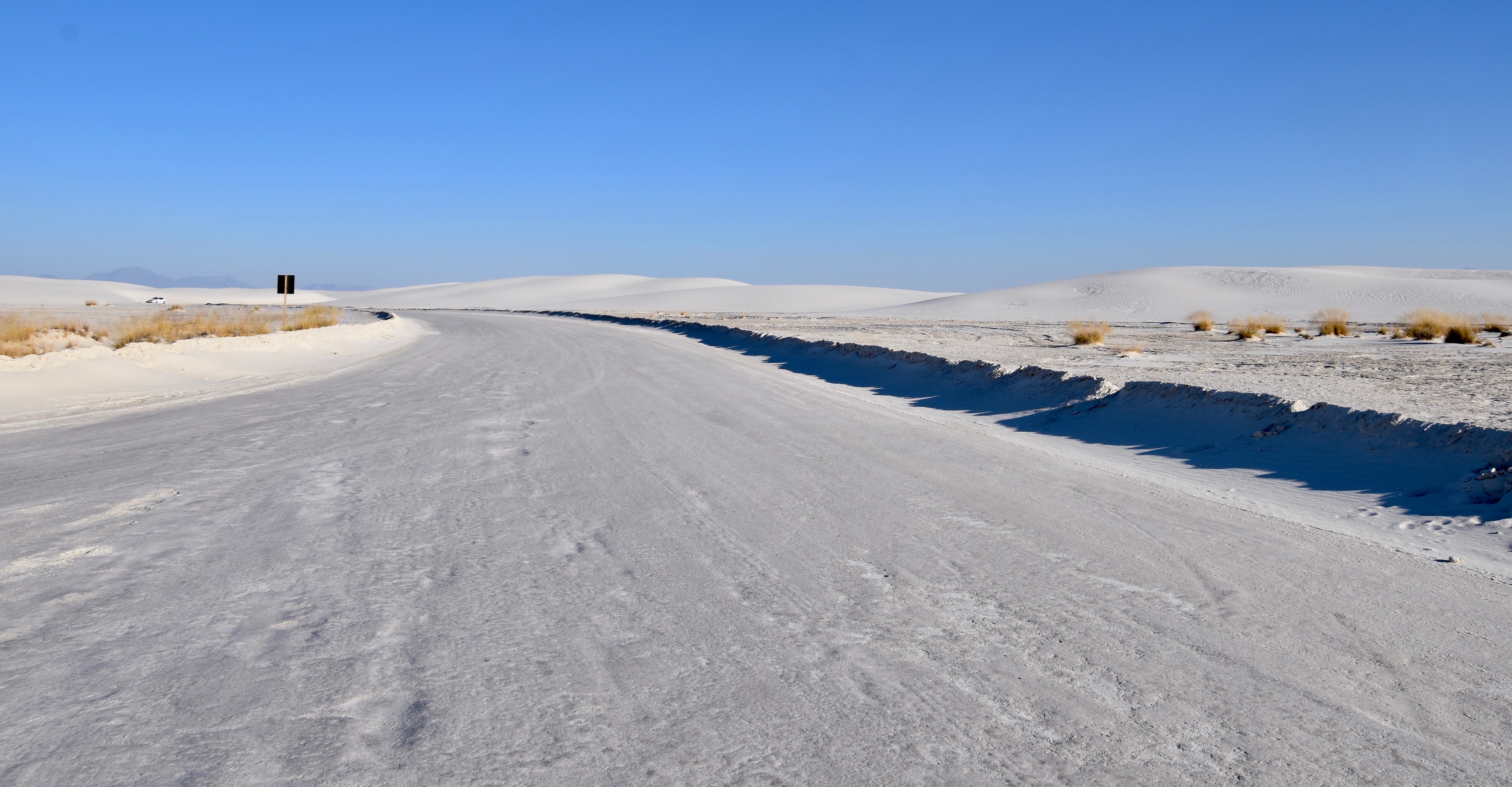
We reach the end of the road where there is a large parking lot with only one other vehicle in it, a family in an RV who are trying to convince their very reluctant little boy that walking in the sand will be a jolly adventure. His wailing says otherwise. After reading the numerous warnings about not going into the desert without being properly prepared we set out to hike the 5 mile (8 km.) Alkali Flat Trail. Luckily the kid is still bawling and refusing to go so there is nobody in front of use. Our shadows lead the way.
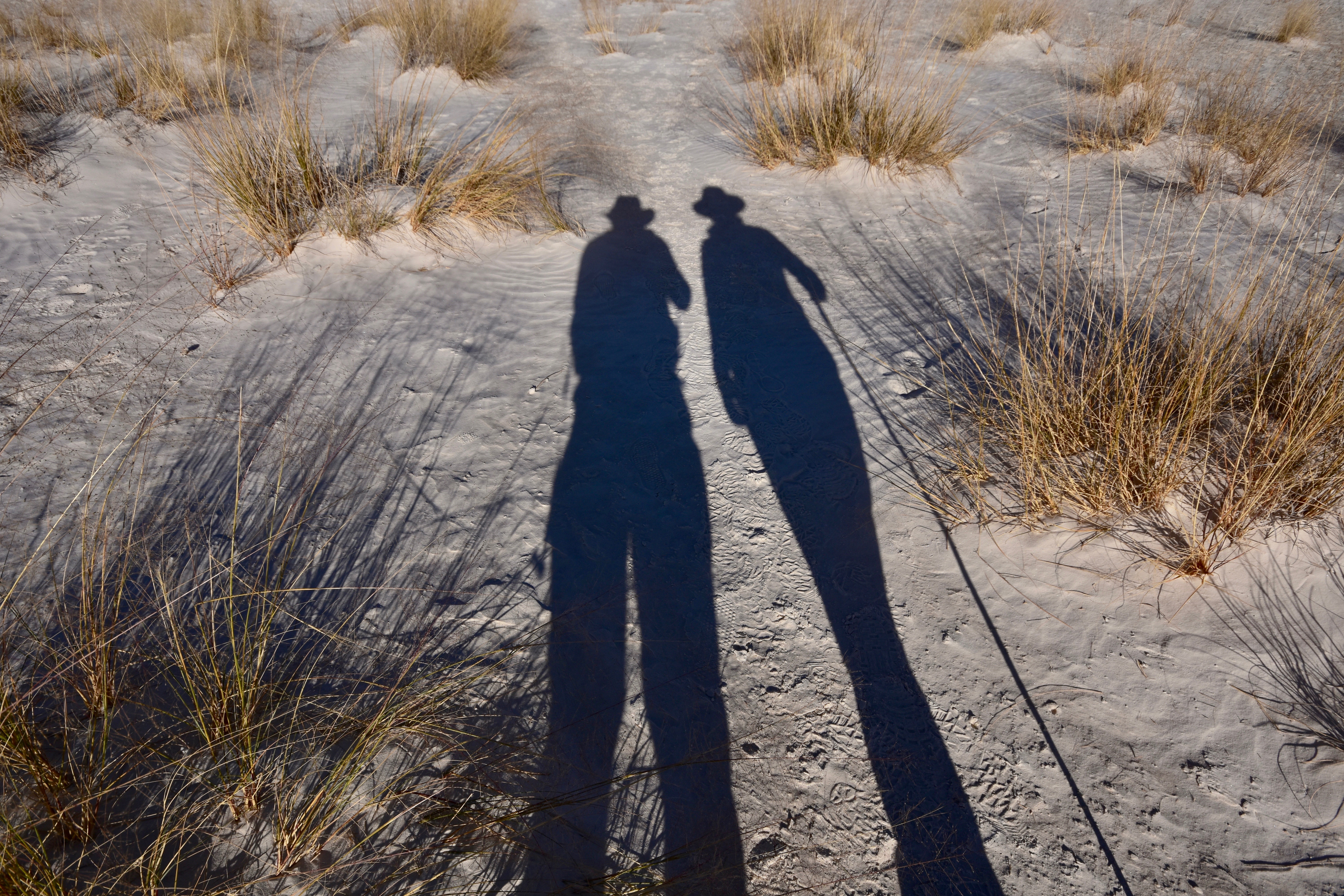
The trail is marked by wooden stakes driven into the sand and is anything but flat. In a very short distance, the little remaining vegetation consisting almost solely of grasses, mostly little bluestem, begins to disappear and there is nothing but this.
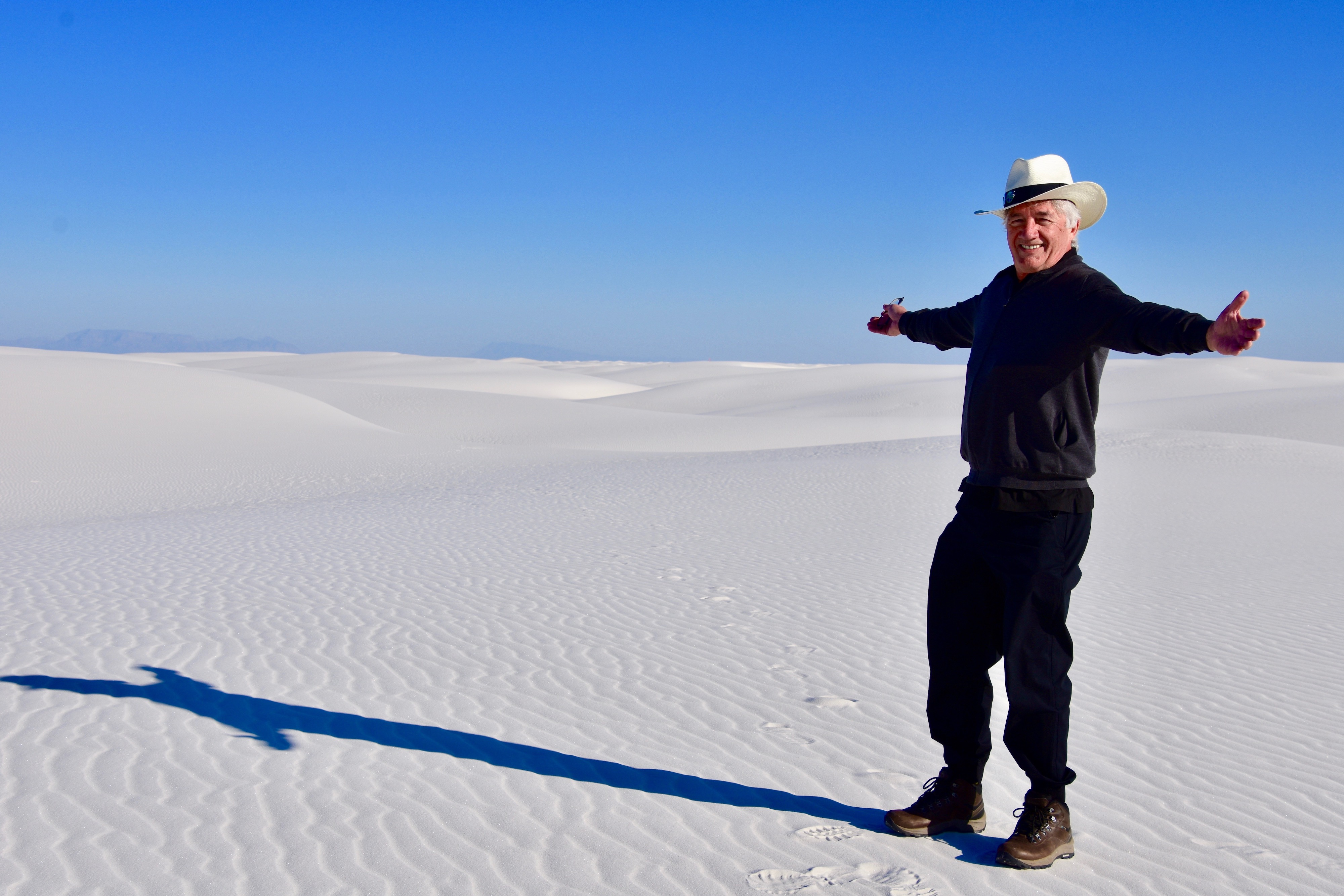
This place is absolutely stunning and we’ve never seen anything like it. The sands really are as white as Ivory Snow and just as pure. We just want to go on and on.
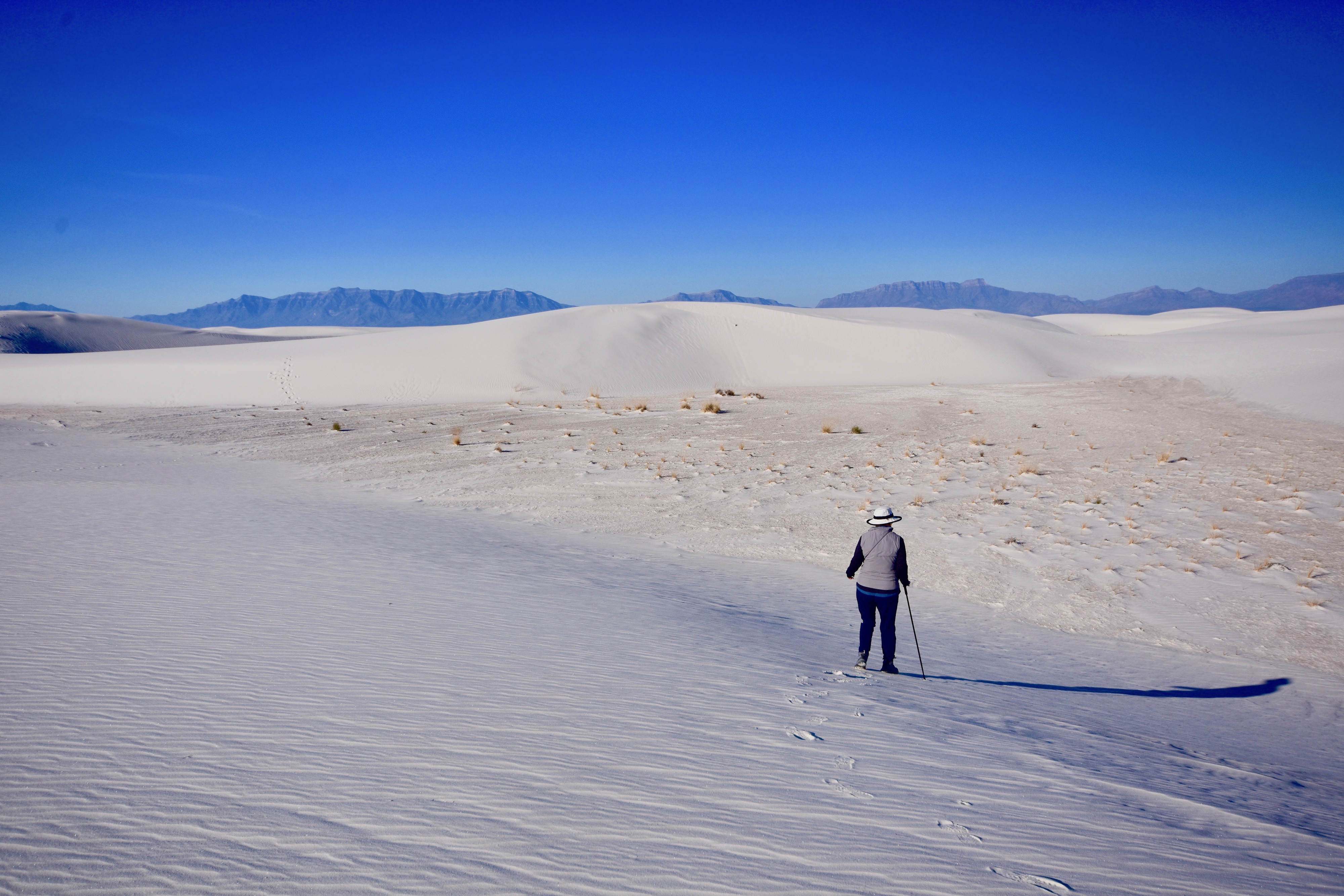
The mountains in the distance are a purply blue, if that makes any sense, and seem very resistant to being properly captioned in a photo. I tried numerous times with multiple settings and even a wide angle and this was the best I could get.
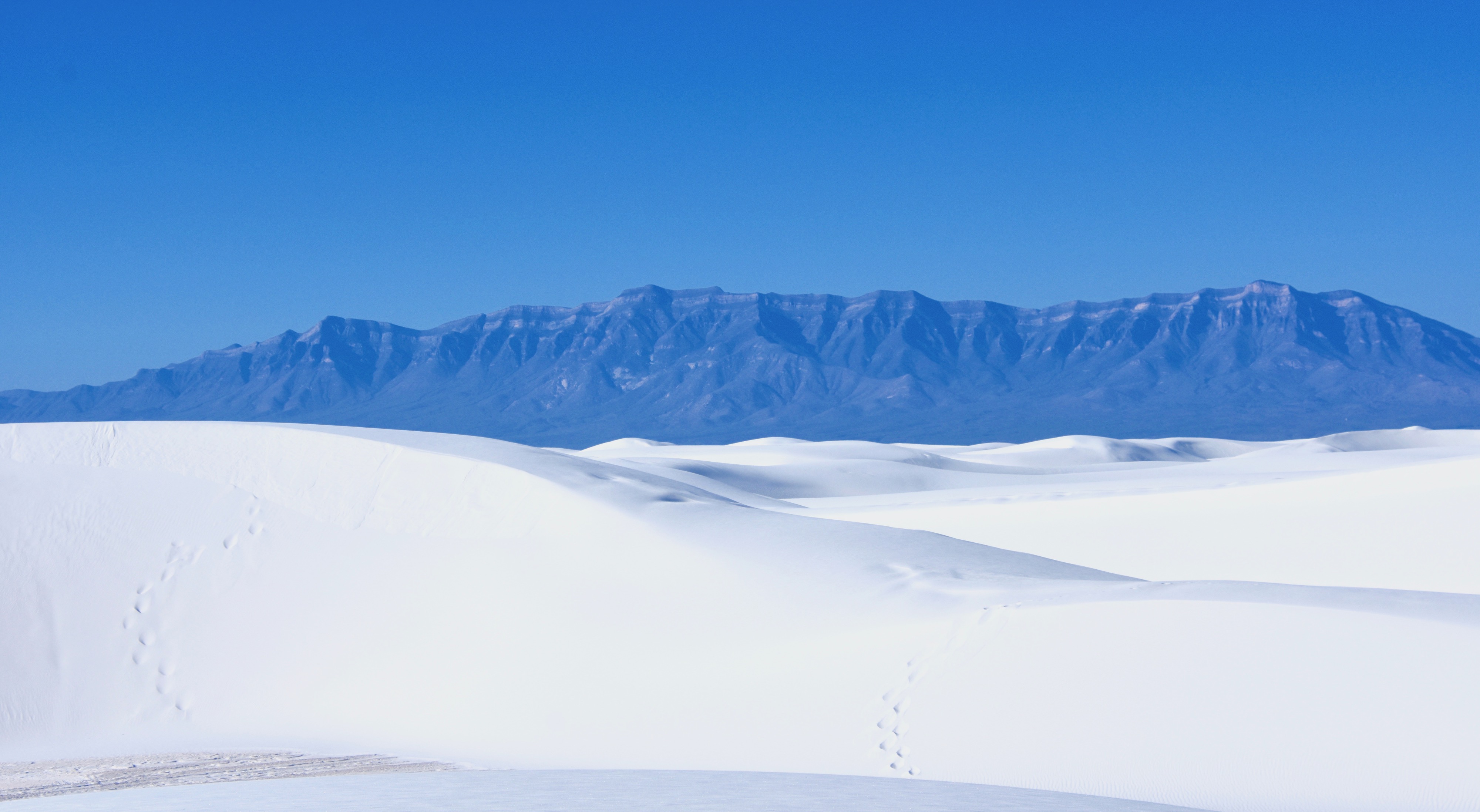
What follows is a series of the best photos I took at White Sands and I think they will give you some idea of why you must visit this place at least once in a lifetime followed by a short video.
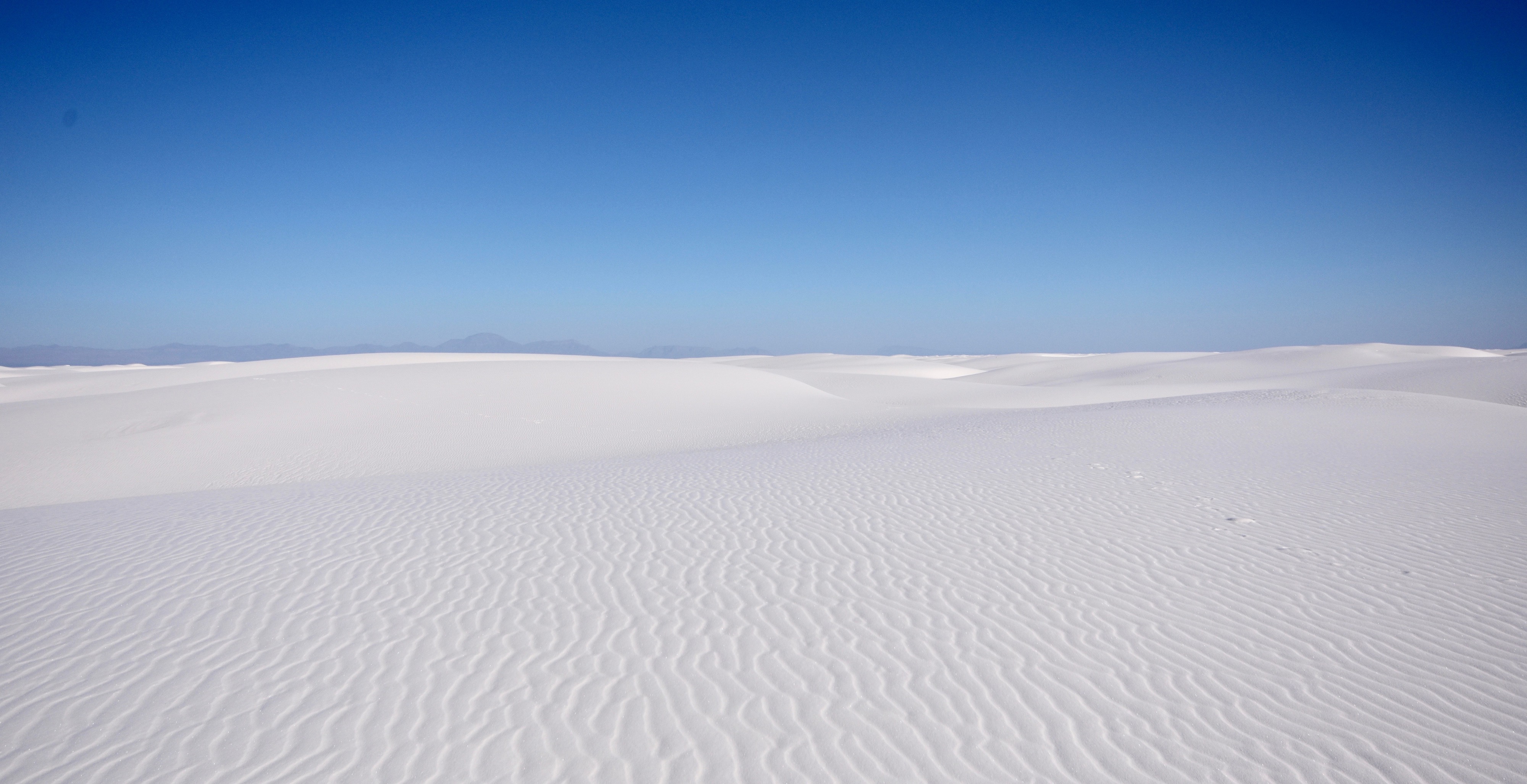
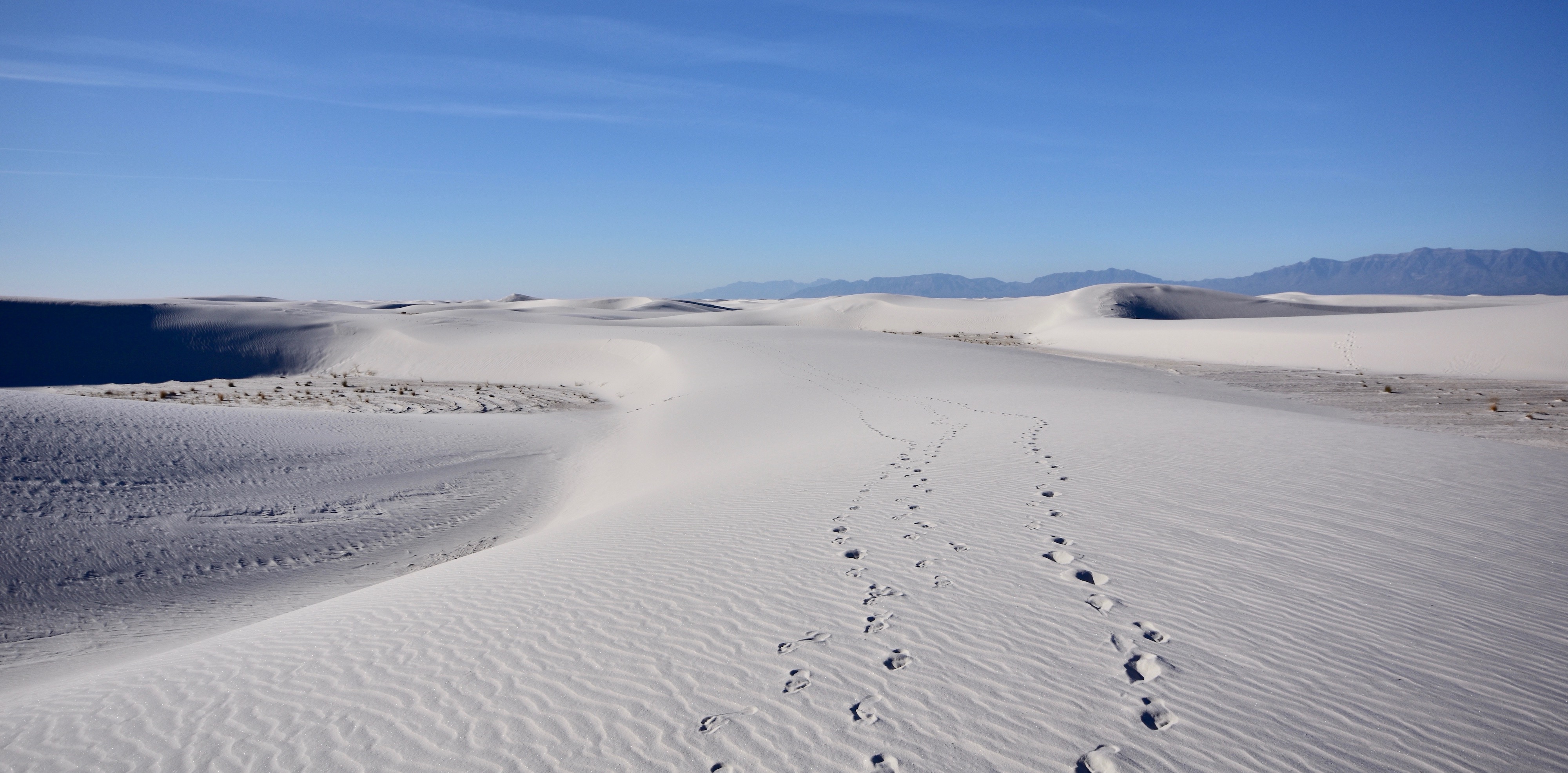
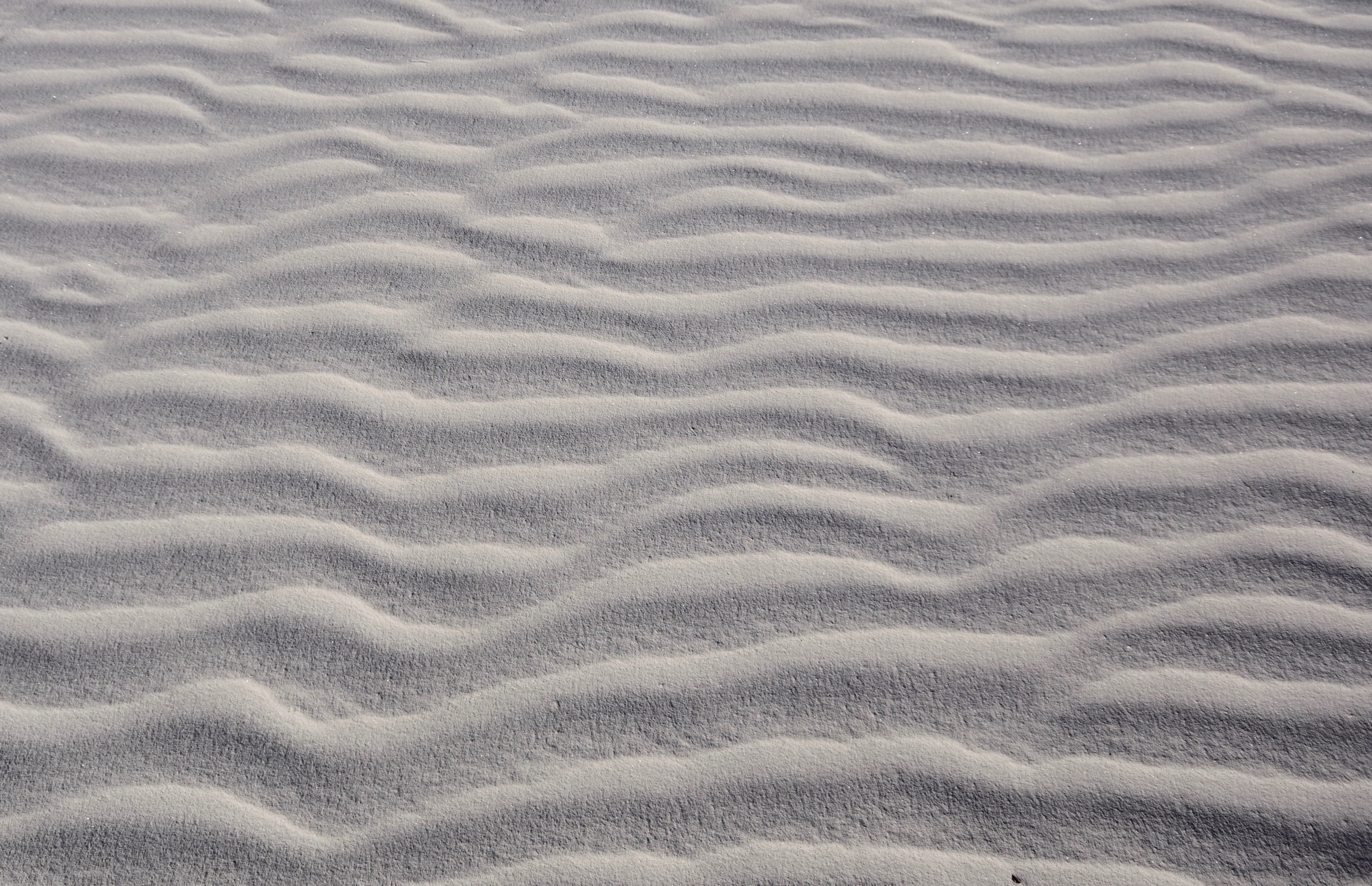
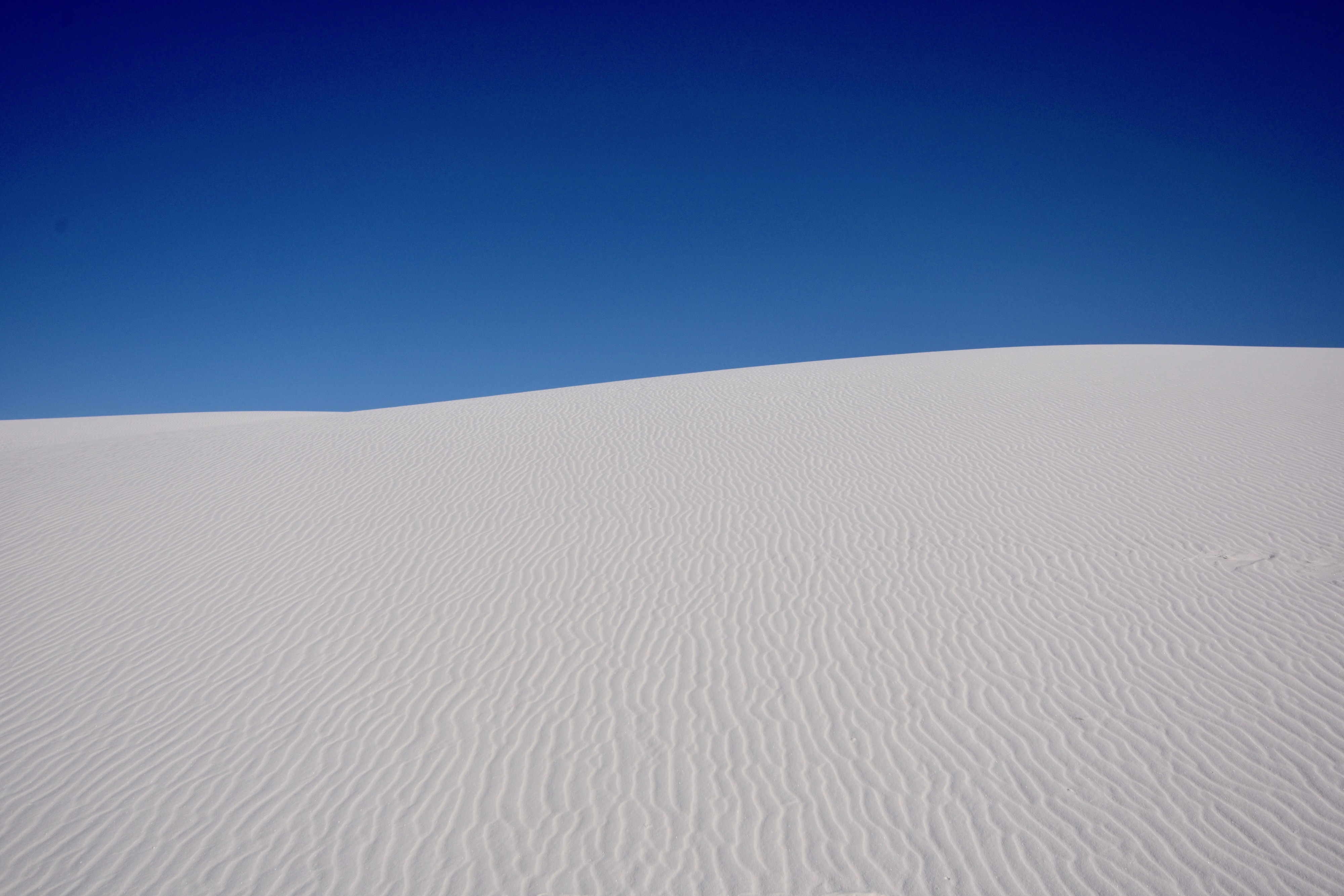
This video, although not the best quality gives a better idea of why White Sands is so special.
The New Mexico adventure continues as I head to the scene of one of the most disgraceful episodes in American history, Fort Sumner which is also where Pat Garrett shot Billy the Kid. Hope you’ll join me.

